Technical Assistance for Tajik Air – 1993
Part Two
Pan Am’s spirit is alive in a unique Technical Assistance Project
Acceptance and Inaugural Flights of Tajik Air’s Boeing 747SP
The acceptance flight is a critical part of the delivery process of an aircraft to an airline. Once the aircraft is accepted and delivered, anything that is discovered wrong with the aircraft becomes the responsibility of the airline. Inspections and the acceptance flight should ensure that this does not happen. The Boeing 747SP was flown to London by a United Airlines supervisory pilot and crew. Upon arrival, Captain Carr and his crew met the aircraft and began the task of inspecting the aircraft and its logs and maintenance records and carrying out the acceptance flight. The aircraft looked great with a fresh paint job with Tajik Air livery. Once everything was signed off, and the walk-around inspection complete, the aircraft was pronounced airworthy and Captain Carr and his crew boarded the aircraft to begin the flight.


However, once on board, there was a surprise awaiting them: The aircraft was full of people! Normally such a flight involves the necessary minimum crew members. Not this one. The press was on board, as were Tajik Air officials, the Minister of Aviation of Tajikistan and management staff. In fact station personnel and baggage handlers were also on board!
From Captain Carr:
“[I had] a quiet conversation with the [Minister of Aviation] to make sure that carrying all these people on a test flight was okay. I learned that wonderful Russian phrase: ‘kharasho’ (‘no problem’). Since he was the law for our Tajikistan operating certificate, it was like getting the word directly from God.
“I climbed into my seat in the cockpit. The United pilot looked really nervous and seemed a few shades deeper red than normal. He indicated his concern about all these people on board, and I said ‘kharasho’, took the clip board from him and signed as Pilot in Command. He looked relieved. I reminded him that United was still responsible for any maintenance items until I signed the aircraft acceptance form. The flight went smoothly, the aircraft was perfect and everyone enjoyed the tour of the English countryside as we put the airplane through its paces. We returned to Heathrow and I made my first landing in a real 747 in about a year and a half. As we came in on final approach, I realized that we had almost all the top brass aboard, the new crew-members and a whole planeload of people who had never been on a 747 before.
“If you’re are flying a 747 correctly, on speed and according to ‘the book’, it normally makes a very nice landing. Once in a while, when conditions are just right and you are very lucky, the touch down is so smooth that you don’t realize you are on the ground until the speed-brake handle comes up as it automatically reacts to a micro-switch on the landing gear as the wheels touch ground. This was one of those landings.
“It is a Russian custom to applaud after a landing. But I didn’t think this applause was for landing, rather giving thanks to be alive. However, during the flight we kept the door open for the bigwigs to view the cockpit and after landing I heard the cheers and applause from behind. Winning an Oscar for an actor couldn’t feel any better than how that landing and applause felt to me. As we all left the aircraft my new bosses kept congratulating me as though I was the greatest pilot in the world. What could I say? I just smiled and secretly thanked Boeing.”

Gunilla Crawford, having arrived in London to handle flight service, also had a look at the 747SP prior to delivery:
“The day came when we were to see the plane for the first time. It was a rainy overcast day, but there she was as beautiful as ever, sitting on the wet tarmac. We inspected the galleys, the equipment and planned the last details, now that a few months of training and planning had come together and the real adventure was to begin. ‘Starving’ for flying since the demise of Pan Am . . .we were all raring to go, as this would be the ‘real’ thing………..or so we thought.”
It was now time to get ready for operations. Ticket sales and crew scheduling were at the top of the agenda.
With the acceptance flight completed and the aircraft ready to start operations, management and staff got into full gear. Tickets were sold, crews scheduled and plans were made for launch activities. At the London Headquarters on Kensington High Street, tickets sales in both the Delhi, India and Karachi, Pakistan markets was brisk and flights sold out very quickly. However, ticket sales in the Dushanbe market was slow due to very little western business activity in the country, and what little passenger traffic there was, was largely government in nature. Thus, selling seats in the beyond markets was necessary. As described in Part One, this “Sixth Freedom” operation enabled a profit on what would have been money losing flights. In fact, over 90-95% of the booked passengers were booked on flights to Delhi or Karachi. Deeply discounted advance purchase excursion tickets offered through local travel agents in the ethnic neighborhoods of London resulted in a huge response.
The Kensington High Street Headquarters served as both a ticket office and operations base with constant activity, day and night. This was punctuated with welcome and frequent visits by the Pan Am and Tajik flight crews.



While ticket sales and preparations for the inaugural flight were progressing, Gunilla Crawford and her team of flight attendants set about to organize crew scheduling and rotations. This was no easy task!
Cabin crew scheduling was a challenge for Gunilla. With no computers available, some creativity was required:
From Gunilla Crawford:
“We went across the street from the hotel to a gas station and bought four dinosaur-shaped erasers in four different colors. Each dinosaur represented a crew. And each crew consisted of two ex-Pan Am flight attendants and the rest Tajik. On a large poster board we plotted the four destinations, London, Dushanbe, Karachi and New Delhi. By moving the dinosaurs between the destinations we made sure nobody was scheduled from London, when in fact the crew member was in New Delhi!”

When Gunilla arrived in London, she was in for a surprise. In addition to heading up the cabin crew, there was another responsibility as well: Catering. She handled that in pure Pan Am fashion.
“We made appointments with Catering at Heathrow airport, we picked china for the First Class Service, silver ware, serving dishes, baskets and linens. The ‘old’ Pan Am training came back in force and we would do the service in the name of that classic carrier.”
The food service to be offered was superb.
In First Class departing London, “Royal Doulton Service” included during the drinks service a choice of Hot Canapes including Chicken Kebab, Mushroom Cream Vol-au-Vent, Spring Roll, Basil Cashew Parmesan Tartlets and Asian Canapes of mixed pakoras and samosas. The Hors d’oeuvres offered a choice of Poached Salmon Medallion on Oakleaf lettuce with Diced Pepper and Cucumber Salad, or a Tomato Cup filled with Mayonnaise Lemon garnish or a Smoked Chicked Breast on Radicchio with Mandarin Orange and Cucumber or a Radish and Mixed Peppers Julienne, all with a Mixed Leaf Salad with Vinaigrette. For the entree, the choices were Curry Prawn Jalfrezi with fresh chopped Coriander, Rack of Lamb with Herbs and Fresh Rosemary Sprigs or Chicken Shirin Polo accompanied by Basmati Rice with Zereshk or Potato Sesame Croquettes and a choice of vegetables including Broccoli au Gratin Mornay or Steamed Mixed Vegetables with Baby Sweetcorn, Turned Carrots and Mange Tout.
For desert Gateau Chocolate Roulade with Orange Zest was followed by a cheese plate that included Camembert, Port Salut, Feta, Stilton, Brie with black grapes, black and green olives and celery batons. Ending the meal was a fresh fruit basket.
Prior to landing in Dushanbe the pre-arrival “hot breakfast was just as posh…It was like working the Pan Am Clippers again”, according to Vince Rossi one of the ex-Pan Am flight attendants.



As the day approached for the first revenue flight from London to Dushanbe and onwards to Karachi, the crews began assembling in London to prepare. For Gunilla, it was a happy reunion with the Tajik flight attendants who greeted their ex-Pan Am counterparts with “squeals and shouts of joy”. For the inaugural flight four ex-Pan Am were to work the flight, Robert Stewart, Tania Anderson, Linda Morehouse and Linda Oja. In the flight deck were Captain Ed Olasz, First Officer Jim Donahue and Flight Engineer Carl Meixal. In addition, two qualified captains were assigned to the flight.
Preparations for departure went into high gear. Nothing was overlooked. Everything was covered, from the accuracy of the manuals to training to CRM (crew resources management) with the Tajik flight attendants. Anything that could possibly happen, even the unpredictable, was discussed and thoroughly prepared for.
The excitement of flying again did not escape the ex-Pan Amers who were taking part in the operation. The 747SP’s first flight coincided almost to the date of the demise of their beloved Pan Am, some two years prior.
From Tania Anderson:
“I happily scribbled away in my diary, gushing about the thrill of flying with my cosmopolitan colleagues again. A few fondly remembered having flown with this particular 747SP before. Some of my co-workers had not flown since Pan Am’s demise. It had been nearly two years to the day that I had been on my last flight, a White House Press Charter, when we learned that we were bankrupt for good. Now as we gathered in the lobby of our London hotel for the first flight to Dushanbe, we all noted the sad anniversary coupled with the excitement of exploring a new airline together.”
At 2215 hrs on the date of the inaugural flight, Tajik Air’s Boeing 747SP, designated flight 7J801, departed London Heathrow for Dushanbe. The spirit on board was one of joy and happiness.
From Tania Anderson:
“During the flight, I quickly noted that many of the passengers, who were going onto Karachi, were much less frenetic than the ones we used to fly on Pan Am. They were elated to be going home, either for a visit or permanently, for a reasonably priced airline ticket. One passenger actually asked if he could kiss me, and I reluctantly replied, “Well, Ok, but on my cheek!” I also noted in my diary that we were flying across Russian airspace which may not sound like a big deal but to someone who grew up during the Cold War when the former USSR was our mortal enemy, it was intriguing to me.
“The multi-national crew also bonded quickly. The Tajik flight attendants loved the fact that my name was Tania. Naturally assuming that I was Russian with a name like Tania, one actually commented that I spoke good fluent English for a Russian. Some of the Tajiks were dark with olive skin and Middle Eastern looks. Most were Muslim. Others were the opposite end of the spectrum with white skin and light eyes. They were usually Russian Orthodox.
“Among the Tajik flight attendants, there were three Irenas on the flight. Any time I said ‘Irena’, all three would whirl around simultaneously to see what I wanted. The Tajik flight attendants were absolutely delightful and so easy to get along with. They were also thrilled to have secured a job such as this with the opportunity to explore a bit of the world, especially London. Many of them had no transportation from their homes, so they simply walked miles to the airport to work these extraordinarily long flights. They went out of their way to tell us how their country was still in a lot of upheaval economically. In addition, Afghani insurgents were coming over the border to make trouble, and they wanted none of it. ‘Tania, we just all want peace and to be able to live our lives’, one told me.”




After a long flight into the night, the 747SP landed in Dushanbe.
From Tania Anderson:
“It was a cold, wintry, snowy day when we landed in Dushanbe to a zealous reception on the tarmac. After all, we were the first western aircraft to ever land in somewhat remote Tajikistan. I distinctly remember applause in the cabin upon our touchdown, but the local hoopla outside just about had me abandoning my jump-seat.
“With a dramatic back drop of steep snow-encrusted mountains, dozens of well-wishers had gathered on the tarmac in their traditional brightly-colored clothes. There was a band playing Russian instruments complete with long-nosed horns and big drums. Tajik national TV was there with their ancient equipment to record every single minute of the ceremonies and our arrival.”




From Tania Anderson:
“Once on the blocks, the ground people enthusiastically boarded the plane, not only to welcome us, but to ask for a quick tour of the 747SP. Descending the spiral staircase, our pilots were given handsome home-made colorful robes to wear over their uniforms. Now that the door was open, I could observe the entire scene. Our pilots were quickly ushered down the stairs and off to the terminal for a reception including some local culinary treats whose identity was left to the imagination. Later one of them told me that the Tajiks had insisted that they shoot some vodka—maybe local moonshine—to celebrate the day. A bit horrified, our pilots made certain that the officials knew we still had another leg to fly to Karachi, but the general response was like, ‘So what?’
“Linda Oja and I stayed on the plane watching everything from L-1. Then something happened I shall never forget. As Linda squealed, ‘Oh, No!’ I saw some Tajiks dragging a sheep across the tarmac towards the Snow Leopard. It struggled the entire way, right up to the staircase, just as if it knew something lousy was about to occur. As they do in many countries, they sacrificed the sheep at the bottom of our stairs, directing the blood from his neck into a bowl. In the west we christen ships and airplanes with champagne, but now we were half way around the world in a land with customs very different than our own.
“Not long afterwards, the entire crew along with the ground people gathered in front of the aircraft for a memorable photo. Each of us was festooned with garlands of deep red-colored roses. They were velvet to the touch and their fragrance was heavenly, even against the cold blast of mid-winter.
“Standing there on that frosty winter day, I felt a true sense of pride about our latest “operation.” In true Pan Am fashion, we had pulled ourselves up after the bankruptcy and were on the other side of the planet helping the struggling Tajiks with their burgeoning airline, begun with one beautiful 747SP.
“Flying on [Tajik Air’s 747SP] was another wonderful Pan Amigo adventure to add to my memoirs.”

When the flight arrived at Dushanbe that morning, Tajikistan was in the midst of an economic crisis along with a civil war. Bread was being rationed but at the same time the country was trying to turn the page into a new chapter of their existence, emerging from the era of Soviet rule to an independent and free nation. The arrival of this beautiful 747SP representing their national airline stoked both great pride and happiness among its citizens.
This unique “Technical Assistance”, from the beginning, was the story of a revolutionary idea that should have been hugely successful. Who would have thought that a remote country in the former Soviet Union would have a Boeing 747 operation linking it with the West? It actually happened – and it could have continued. Unfortunately the fates would not allow that and countless hours of devotion to a noble project went to waste. If there is blame, it is not worth dwelling on. Everyone wanted the right outcome. Unfortunately, it was not to be.
The timing was just not perfect for starting such an operation. The infrastructure within Tajikistan’s Civil Aviation Authority had not matured enough to take on the financial and political burden of a complex Sixth Freedom operation, requiring bilateral agreements not only with the United Kingdom, but with India and Pakistan as well. Thanks to the London management, the UK agreement and slots at Heathrow were secured. Unfortunately, the negotiations to secure the agreements with India were still incomplete when the operation started and that presented barriers and resultant revenue losses. Had the start of the operation been delayed until the negotiations were completed there might have been a different result. That will never be known. However, the Boeing 747SP operation proved that it could be done, and for four short months, Tajik Air’s Boeing 747SP proudly flew the skies between London, Dushanbe and Delhi/Karachi.


Tajik Air’s Boeing 747SP, Manufacturer’s Serial Number 21649, Serial 373 was first delivered to Pan American World Airways on May 11, 1979 registered as N540PA and named Clipper White Falcon. It was renamed Clipper Flying Arrow on August 1, 1979 and later renamed Clipper Star of the Union on January 1, 1980. One year later, on January 1, 1981, the aircraft became China Clipper.
On February 12, 1986, as part of Pan Am’s sale of its Pacific Routes, N540PA was acquired by United Airlines. The registration was changed to N149UA on June 1, 1986. It was under this registration that the aircraft operated for Tajik Air. After the aircraft was repossessed by United Airlines, it was bought by the Brunei Government and re-registered as V8-JBB. It was then bought by the Government of Bahrain on December 24, 1998 and registered as A9C-HMH. Today the aircraft is owned by the Las Vegas Sands Corporation, registered as VQ-BMS. She is still in operation.
EVENT REMINDERS:
Aircraft Accident Workshop, 31 May 2014 in San Francisco.
Click here for info or registration.
Pan Am’s Worldwide Family Reunion
31 July – 3 August 2014
New York/Long Island City
Click here for info and registration.
For additional information about Pan American World Airways:
To learn more about the history of this pioneering airline, click on the title below for preview of
Pan American World Airways – Images of a Great Airline Second Edition.
This book is available on eBay .
Another excellent book is Pan Am – Personal Tributes to a Global Aviation Pioneer, which was published to commemorate the 90th Anniversary of Pan Am’s founding. It contains more than 80 stories written by former Pan Am employees and international media friends who had personal experience with many of Pan Am’s key events during its history. It is the perfect companion to Pan American World Airways – Images of a Great Airline Second Edition and can be purchased on Amazon.
Preview Pan American World Airways – Aviation History Through the Words of its People, which is available on Amazon.
For further information about the history of Pan American World Airways, visit: Pan Am Historical Foundation


























































































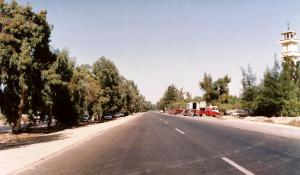

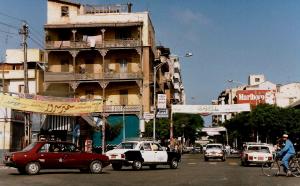
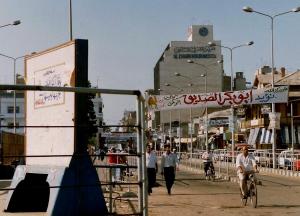


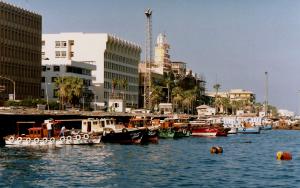
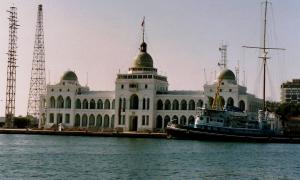

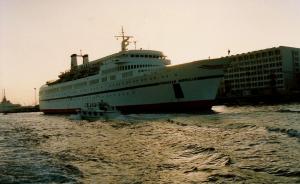

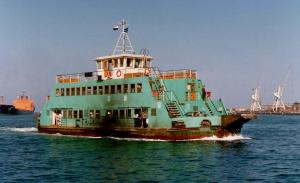


Recent Comments